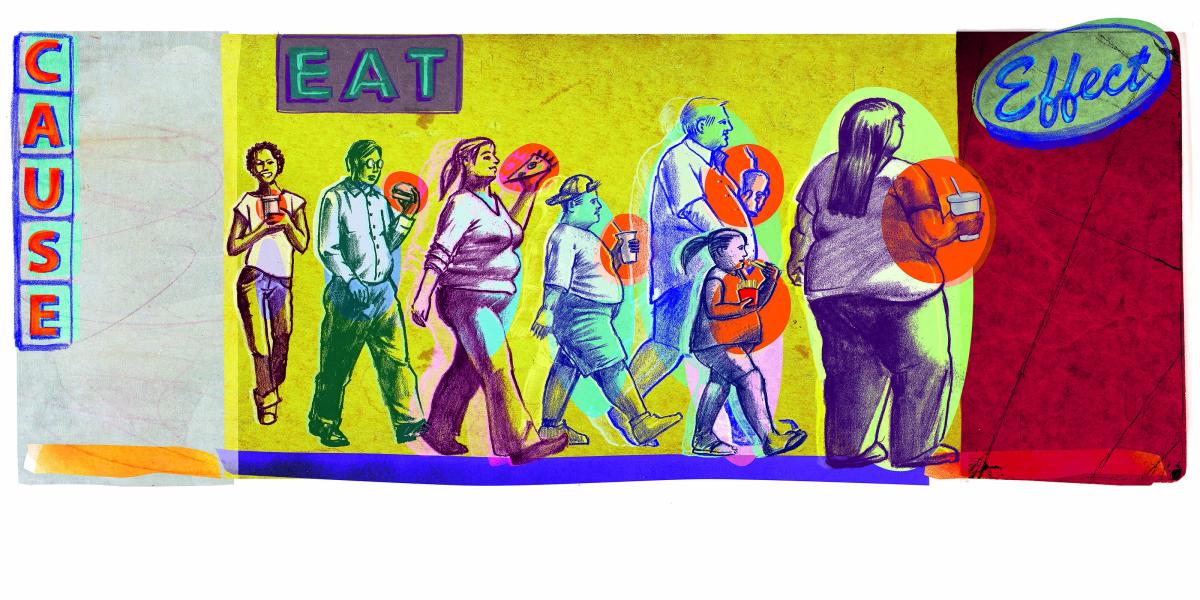The U.S. Obesity Epidemic: A Weighty Issue
More Americans are getting fat, fat Americans are getting fatter, and the prognosis is shocking: By the year 2015, 75 percent of U.S. adults will be overweight or obese and 41 percent will be obese, according to a study published this summer by Youfa Wang, MD, PhD, assistant professor of International Health and Epidemiology, and May Beydoun, MPH, PhD, postdoctoral fellow in International Health. For some socioeconomic groups, the news is even worse: More than 80 percent of African-American women and Mexican-American men will be overweight. Only smoking causes more deaths and disease, and if the rate of obesity keeps rising as expected, obesity will soon overtake tobacco as the number one preventable killer of Americans.
Genetics have been found to play some role in a person's weight, but they don't explain why the obesity epidemic is skyrocketing. "The simple answer is that we're eating more and we're less physically active," says Lawrence Cheskin, MD, director of the Johns Hopkins Weight Management Center. "Our food supply is composed of eating out and a lot of snack foods." And with computers, video games and an automobile-centric culture, Americans simply don't move enough to burn the extra calories.
By the year 2015, 75 percent of U.S. adults will be overweight or obese and 41 percent will be obese, according to a study published this summer by the Bloomberg School's Youfa Wang and May Beydoun.
So what's to be done? Benjamin Caballero, MD, PhD, professor of International Health and former director of the Center for Human Nutrition, recommends a national task force that would give the epidemic visibility and use TV spots regularly to educate people, much like the campaign against tobacco. Government policies can also influence the epidemic. Healthy food is often more expensive than unhealthy food, and both Wang and Cheskin advocate government support for producing fruits and vegetables to make them cheaper at the grocery store.
One-third of American kids are overweight, and overweight children are far more likely to become heavy adults. Setting better standards for the National School Lunch Program—which feeds millions of poor kids in lower socioeconomic groups already disproportionately impacted by the epidemic—is one way to help curb childhood obesity. Another is controlling advertising. In August, Dina Borzekowski, EdD, assistant professor of Health, Behavior and Society, co-authored a study showing that preschoolers preferred the taste of food and drinks in McDonald's packages to the same foods in unbranded packaging. The study results support prohibiting or regulating the advertising of high-calorie, low-nutrient food to kids.
All these are national measures. "But a lot of ways to change obesity are at the community level," says Caballero, "because environmental factors such as access to healthy food and places to exercise are local problems."
Incorporating parks, sidewalks and bike trails into urban planning can help get Americans moving. Regulations could even be used to make grocery stores display healthy items more prominently to influence what customers buy, say public health advocates. Putting nutritional information on restaurant menus, such as the number of calories and the fat content, is already helping patrons make better choices. And of course, individuals still have to learn to make better food choices and eat less, even through simple strategies like using smaller plates.
"There is no one, simple answer," says Wang.
